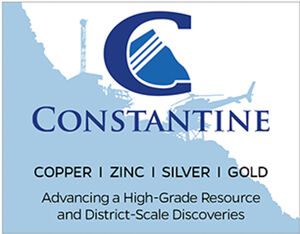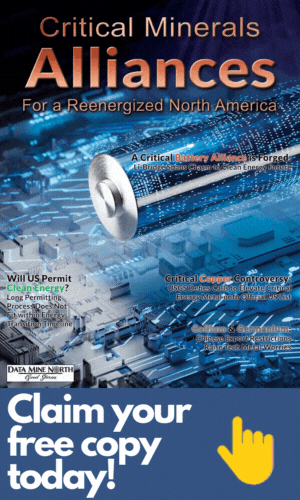High-metals future
World Bank predicts low-carbon energy will push metals demand sharply higher
Last updated 1/14/2018 at 2:33pm
A low-carbon future means there is going to be a lot more mining, according to a July 18 World Bank report.
The report, “The Growing Role of Minerals and Metals for a Low-Carbon Future” sees the potential for a 200 to 1,000 percent in demand for a broad range of metals if the world is going to meet the temperature targets of the 2015 Paris Agreement on Climate Change.
This is good news for areas rich in aluminum, copper, molybdenum, zinc, lead, lithium, manganese, nickel, silver, steel, graphite, rare earth elements, and indium – metals and minerals expected to be in high demand to build the infrastructure needed to bring down carbon emissions.
“With better planning, resource-rich countries can take advantage of the increased demand to foster growth and development,” said World Bank Senior Director Riccardo Puliti. “Countries with capacity and infrastructure to supply the minerals and metals required for cleaner technologies have a unique opportunity to grow their economies if they develop their mining sectors in a sustainable way.”
More metals needed
The World Bank says the demand for specific metals and minerals will depend upon how committed countries are to meeting the targets of the Paris Agreement and which low-carbon technologies are employed to meet that commitment.
“For example, the three leading forms of alternative vehicles — electric, hybrid, and hydrogen — each have different implications for metal demand: electric vehicles require lithium; hybrid vehicles use lead and hydrogen-powered vehicles use platinum,” World Bank wrote.
All three alternative vehicles use substantially more copper and rare earth elements than the traditional petro-powered car.
While it is currently unclear which low-carbon energy sources will win out over the coming three decades, wind and solar power are expected to be an increasingly part of the mix.
In a recent presentation, the World Bank noted that a single 3 megawatt wind turbine contains 335 tons of steel, 4.7 tons of copper, 3 tons of aluminum, 2 tons of rare earth elements, 1,200 tons of concrete, along with healthy quantities of zinc and molybdenum.
To meet the less than 2 degree Celsius temperature increase goals of the Paris Agreement, the bank predicts that solar panels will increase the demand for indium, molybdenum, silver, aluminum, copper, zinc, steel, nickel and lead by roughly 200 percent.
Any mix of these low-carbon alternatives will likely require energy storage batteries to ensure reliable and steady delivery of electricity from intermittent sources.
These batteries will drive increased demand for graphite, lithium, cobalt, nickel, zinc, cadmium and other metals.
The bottom line of World Banks’s 112-page report is “climate-friendly technologies typically require more metals than alternative higher carbon technologies” and “demand for metals will also be dependent on which wind, solar, and battery technologies will win out in the market place.”
Fabric of human development
While the primary goal was to investigate the potential demand increases for minerals and metals in a low-carbon future – something not analyzed during the framing of the Paris Agreement –authors hope the report will open up the door for dialogue between the environmental, clean energy technology and mining communities.
“The dynamic between these groups has been predominated by polarization and ‘self-serving’ characterizations that have turned out to be self-defeating, particularly when it comes to developing coherent climate and sustainable development policies that are effectively aligned with a given country’s development plans,” Puliti wrote in the introduction.
Pointing out that metals and minerals form the ‘fabric of human development,’ World Bank Senior Mining Specialist Daniele La Porta Arrobas said decreased poverty, increased urbanization, better homes and schools, and future technologies are all going to drive increased demand for minerals and metals.
“Adding to this demand is the introduction of more mineral-intensive, low-carbon technologies,” she inked in a July 18 blog.
Instead of putting massive resources into fighting, Puliti and La Porta say the mining and conservation communities would be better served by working together to come up with even more sustainable methods of extracting the minerals and metals that will be needed for a brighter and greener future.
“This lesson now needs to be communicated and integrated at the national level: resource development as a complement and not competitor to a greener, more sustainable future,” Puliti inked in the report.














Reader Comments(0)